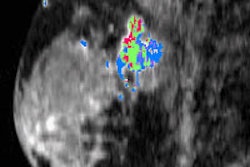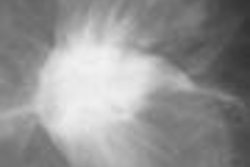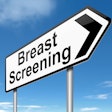CHICAGO - Women diagnosed with triple negative (TN) breast cancer -- in which the tumor is estrogen receptor-negative, progesterone receptor-negative, and HER2-negative -- tend to have fewer treatment options and worse prognoses than women with non-TN tumors.
But researchers at University of Pennsylvania Medical Center in Philadelphia have found data on triple negative cancers that may help clinicians diagnose and characterize them earlier. Dr. Sade Udoetuk, along with co-author Dr. Emily Conant, presented the study findings in a presentation at the 2007 RSNA meeting.
"These cancers have been found to be very aggressive, and are usually picked up as interval cancers," Udoetuk said. "They also tend to have a poor prognosis, as they aren't as amenable to hormonal therapies."
Udoetuk and Conant compared the imaging features and clinical presentations of triple negative cancers with those of other breast cancers through an imaging trial of 284 women from March 2002 to March 2006. Each participant received a battery of imaging tests, including a bilateral film-screen mammogram, digital mammogram, whole-breast ultrasound, contrast-enhanced MRI, and a whole-body PET scan. The mean age of study participants was 50.
The group identified triple negative tumors via immunohistology, and reviewed each woman's imaging reports and patient charts for imaging characteristics, clinical presentation, biopsy results, and staging. Of the 284 study participants, 31 (11%) had triple-negative cancers.
The researchers also found that triple negative cancers affected women of different races differently: Of the 50 black women enrolled in the study, 12 had TN cancers (24%), compared to 19 of 234 nonblack women (8%).
Triple-negative cancers were found to have some particular clinical characteristics, as compared to non-triple negative cancers:
|
The group determined that, when they excluded lesions that were palpable by the woman herself or by her doctor, and looked only at symptoms such as breast pain and nipple discharge, women with TN cancer were four times as likely to have those symptoms as women with non-TN cancers, Udoetuk said. And the TN cancers were more advanced.
"The triple negative cases we found tended to be further along in their staging, with a higher percentage of positive axilllary nodes than the non-triple negative cases," she said.
Not including women who were imaged following excisional biopsy, TN cancer tumors were characterized by round or oval masses by either MR or ultrasound scans in 18.5% of the women with this type of cancer, versus 4% of women with non-TN cancers, according to Udoetuk.
By Kate Madden Yee
AuntMinnie.com staff writer
November 29, 2007
Related Reading
Triple-negative breast cancers more likely to affect young, poor minority women, April 13, 2007
Prognostic markers in triple-negative breast cancer identified, February 15, 2007
Protein could help detect aggressive breast cancer, January 26, 2007
Copyright © 2007 AuntMinnie.com




















